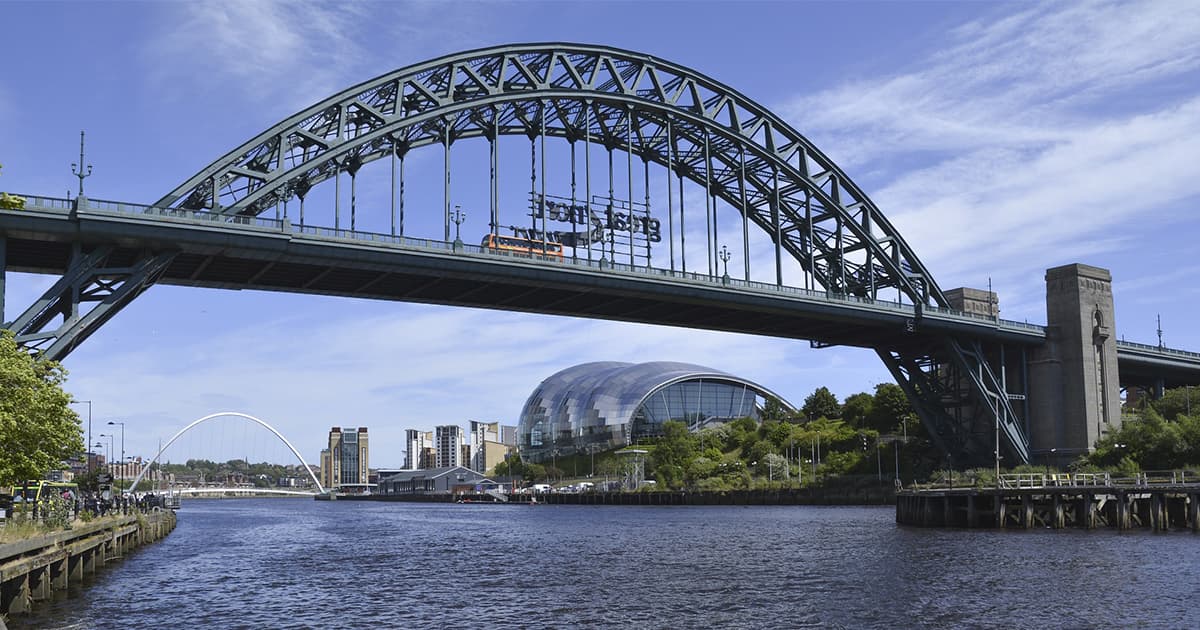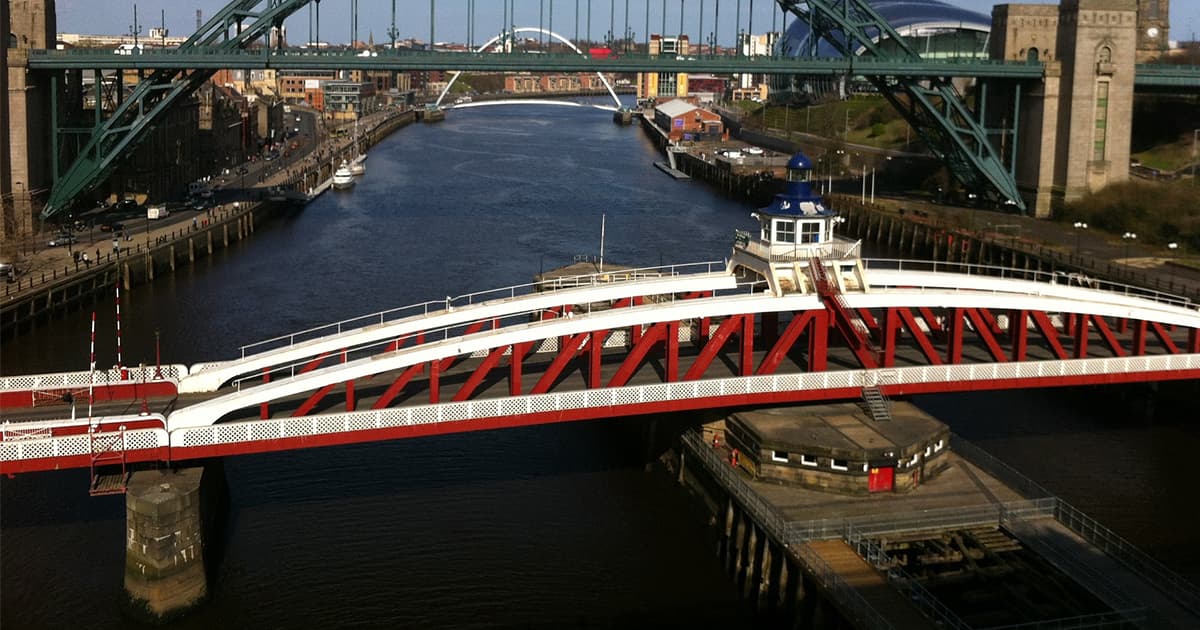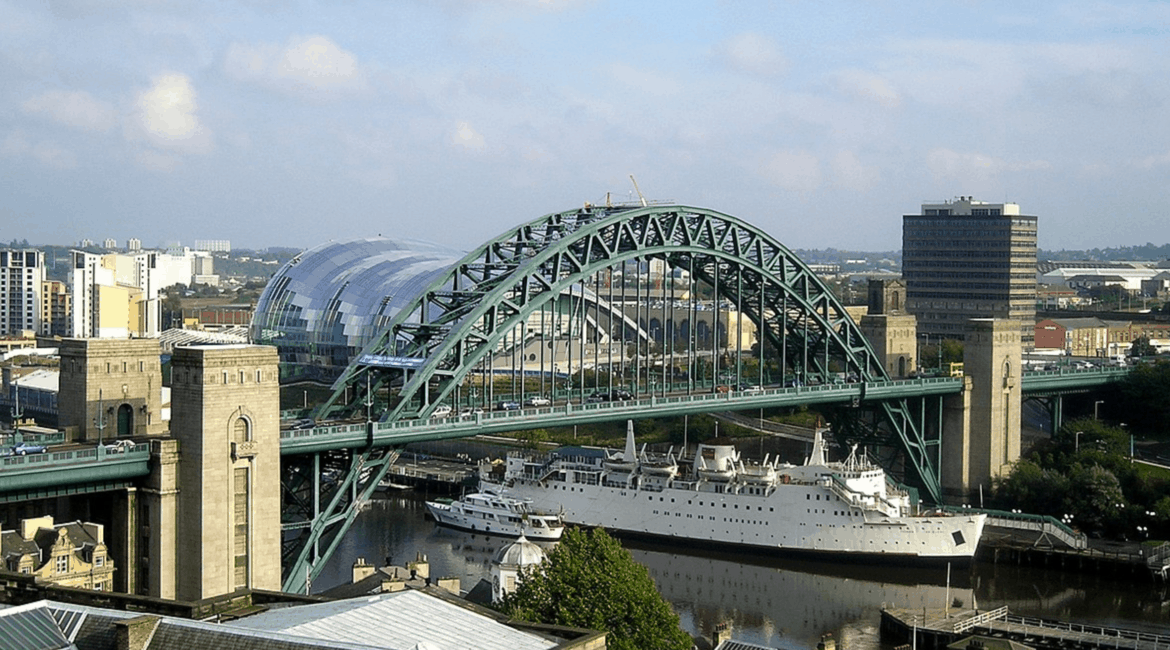As a North East based construction company, we are obviously great admirers of impressive examples of construction and engineering, especially those found in the local area. When you think of the Newcastle and Gateshead Quayside, it’s hard to do so without also thinking of bridges.
The bridges spanning the Tyne each have their own personality. If you stroll through the centre of Newcastle you can see seven of the most iconic of these bridges.
Gateshead Millennium Bridge
The Millennium Bridge in Gateshead is open to pedestrians and cyclists. If you are lucky, you can see the bridge in its tilted position. The times for this are posted near the bridge. Its, now iconic, design was the award-winning brainchild of WilkinsonEyre.
The bridge was constructed off-site. It was then lifted into place, by crane, in one piece. Originally there were bollards installed to prevent unwanted traffic crossing the bridge. There were later removed as they were unsightly and unnecessary.
Tyne Bridge

The Tyne Bridge was designed by the same company that went on to create the Forth Road Bridge. Its majestic arch is now a defining symbol of Tyneside. The Hell Gate Bridge in New York City inspired the bridge. It is considered to be an important enough structure to be classed as Grade II listed. This means it is considered to be a ‘particularly important structure of more than special interest.’
The Dorman Long team who was responsible for construction included Dorothy Buchanan. Dorothy was the first female member of the Institution of Civil Engineers.
High Level Bridge
In terms of engineering, the High Level Bridge is one of the most outstanding bridges in the city. It was constructed from over 5,000 tons of iron. The design incorporates tied arches.
The bridge was built to help form a rail link towards Scotland. It carries both rail and road traffic. It is also open to pedestrians. The bridge was expanded beyond rail traffic in a bid to increase the revenue. It now carries some rail traffic as well as limited weights of road traffic. These limitations are to preserve the bridge as it is now a Grade I listed structure.
Queen Elizabeth II Metro Bridge
The bright blue steel of this bridge makes it stand out on the skyline. The steel truss connected with box chords reflects the light such that the colour of the blue steel appears a little different from every perspective.
The bridge was specifically designed to carry the metro between Newcastle and Gateshead. At either end of the bridge, the train travels through tunnels and only breaks into the air to cross the bridge.
The bridge was named after Queen Elizabeth II as she opened it in 1981.
King Edward VII Bridge
This railway bridge is one of the plainer bridges that join Newcastle and Gateshead. Despite its simple appearance, it is been described as one as the last great railway bridge constructed in Britain. It was named for King Edward VII who opened the bridge.
Charles Harrison of North Eastern Railways designed the bridge. The Cleveland Bridge and Engineering Company completed construction in 1906. The design of the bridge had to change from the original plans when abandoned coal workings were found at either end of the bridge, which is how the bridge ended up with five spans instead of the originally planned two.
The bridge was built to replace the old High Level Bridge and to ease congestion at the train station.
Swing Bridge

The Swing bridge is another Grade II listed bridge. There has been a bridge on this site since Roman times. The current bridge has been in operation since 1876. At its time of construction it was the largest swing bridge made.
The bridge is turned using hydraulic power. Although it was renovated in 2018, it still uses the original machinery from when it was first installed. The bridge can turn a full 360 degrees to allow ships to pass on both sides.
Redheugh Bridge
The original plans for this bridge saw the construction of a combined road and rail bridge. When the North Eastern Railway got their own bridge, the plans shifted towards a road-only crossing.
Thomas Bouch designed the original bridge in 1859. The same designer as for the ill-fated Tay bridge. The unique designed included allowanced for gas and electric cables to also run over the river. Unfortunately, the bridge design was flawed, and this led to the bridge needing to be replaced in 1897.
The second bridge unfortunately also suffered from some design flaws. The current bridge was replaced in 1980. The most recent incarnation of the bridge was a much more functional affair, made from pre-stressed concrete. So far, this design seems to be standing the test of time.

